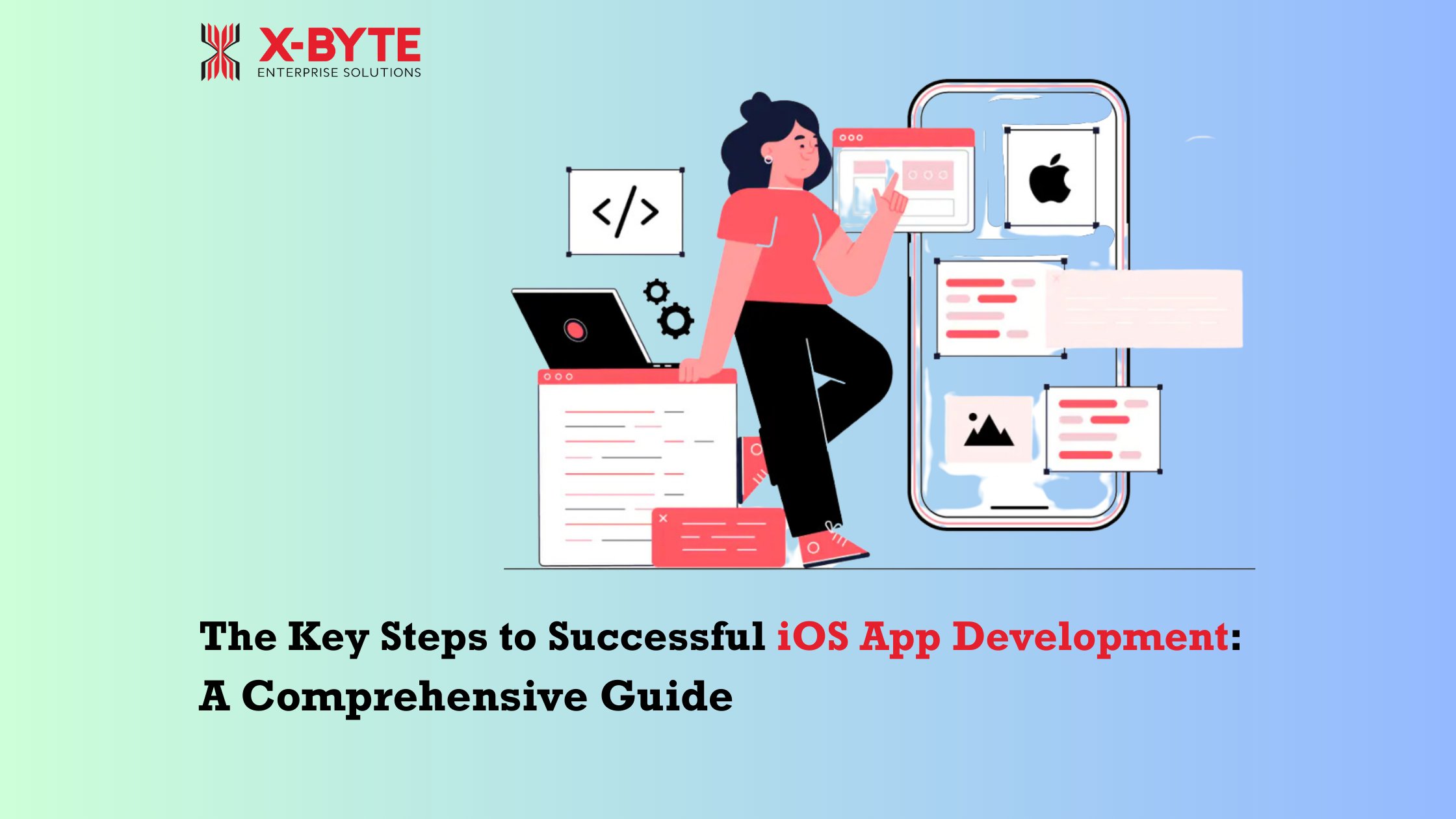The Key Steps to Successful iOS App Development: A Comprehensive Guide
iOS app development is the process of creating applications for Apple's iOS platform, which powers the iPhone, iPad, and iPod Touch.

Introduction to iOS app development
As technology continues to advance at a rapid pace, mobile app development has become a booming industry. With the rise in popularity of smartphones, creating apps for iOS devices has become a lucrative business. In this comprehensive guide, we will explore the key steps to successful iOS app development.
Understanding the iOS app development process
Before diving into the world of iOS app development, it is important to understand the process involved. iOS app development is the process of creating applications for Apple's iOS platform, which powers the iPhone, iPad, and iPod Touch. The process involves several stages, including planning, designing, coding, testing, and submitting the app to the App Store. Each stage requires careful consideration and attention to detail to ensure a successful app launch.
Setting up your development environment
To begin developing iOS apps, you need to set up your development environment. This involves installing Xcode, Apple's integrated development environment (IDE) for iOS app development. Xcode provides a wide range of tools and resources, including a code editor, debugging tools, and simulators for testing your app on different devices. Additionally, you will need to create an Apple Developer account, which will allow you to access essential resources and submit your app to the App Store.
Choosing the right programming language for iOS app development
When it comes to iOS app development, choosing the right programming language is crucial. Objective-C has long been the primary language for iOS app development, but in recent years, Apple has introduced a new programming language called Swift. Swift offers a more modern and streamlined approach to app development, making it the preferred choice for many developers. Consider your project requirements and personal preferences when deciding which programming language to use.
Creating a project and configuring app settings
Once your development environment is set up and you have chosen a programming language, it's time to create a new project and configure the app settings. In Xcode, you can create a new project by selecting the appropriate template for your app. You will then need to configure various settings, such as the app's name, bundle identifier, and version number. These settings are essential for identifying and managing your app throughout the development process.
Designing the user interface for your iOS app
The user interface (UI) plays a crucial role in the success of an iOS app. A well-designed and intuitive UI can greatly enhance the user experience. When designing the UI for your iOS app, it is important to consider factors such as simplicity, consistency, and accessibility. Use Apple's Human Interface Guidelines as a reference to ensure your app adheres to the design principles and best practices recommended by Apple.
Implementing functionality and features
After designing the UI, it's time to implement the functionality and features of your iOS app. This involves writing code to handle user interactions, process data, and perform various tasks. Whether you're building a simple utility app or a complex game, careful planning and organization of your code are essential. Follow best practices, such as modular programming and code reuse, to ensure a maintainable and scalable app.
Testing and debugging your iOS app
No app is complete without thorough testing and debugging. Testing your iOS app involves checking for bugs, functionality issues, and user experience problems. Xcode provides various tools and frameworks for testing, including the XCTest framework for unit testing and the Instruments tool for performance testing. It is important to conduct both automated and manual testing to ensure your app works flawlessly on different devices and operating system versions.
Optimizing your iOS app for performance
To ensure your iOS app delivers a smooth and responsive user experience, it is crucial to optimize its performance. This involves minimizing resource usage, improving loading times, and optimizing code execution. Techniques such as lazy loading, background processing, and memory management can greatly improve the performance of your app. Regular profiling and performance testing will help you identify and address any performance bottlenecks.
Submitting your iOS app to the App Store
Once your iOS app is thoroughly tested and optimized, it's time to submit it to the App Store. Before submitting your app, make sure to carefully review Apple's App Store guidelines to ensure compliance. You will need to create an App Store Connect account, provide detailed app information, and upload screenshots and promotional materials. Apple will review your app for quality and adherence to guidelines before approving it for distribution.
Maintaining and updating your iOS app
After your iOS app is successfully launched on the App Store, the work doesn't stop there. It is important to regularly maintain and update your app to keep it relevant and competitive. This includes fixing bugs, adding new features, and optimizing performance based on user feedback and market trends. Regularly monitoring app analytics and user reviews will provide valuable insights for future updates and improvements.
Conclusion
iOS app development offers exciting opportunities for developers to create innovative and functional apps for Apple's popular devices. By following the key steps outlined in this comprehensive guide, you can increase your chances of success in the competitive world of iOS app development. From setting up your development environment to submitting your app to the App Store, each step is essential for creating a successful iOS app. Remember to always stay updated with the latest technologies and best practices to stay ahead in the ever-evolving world of mobile app development.
What's Your Reaction?


















